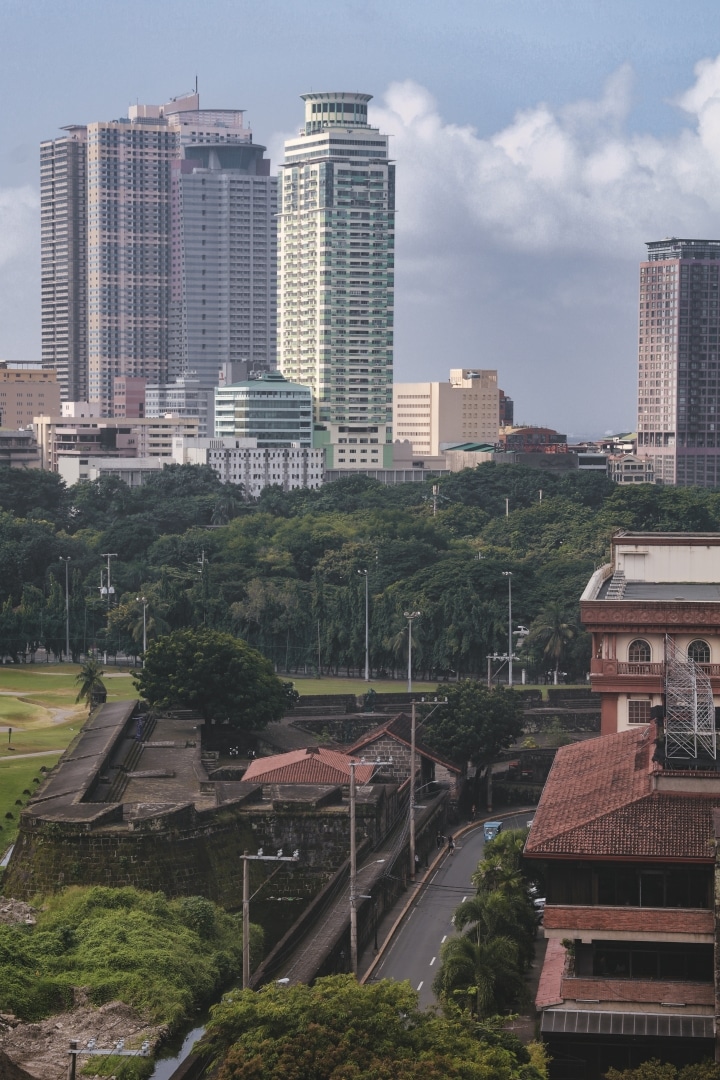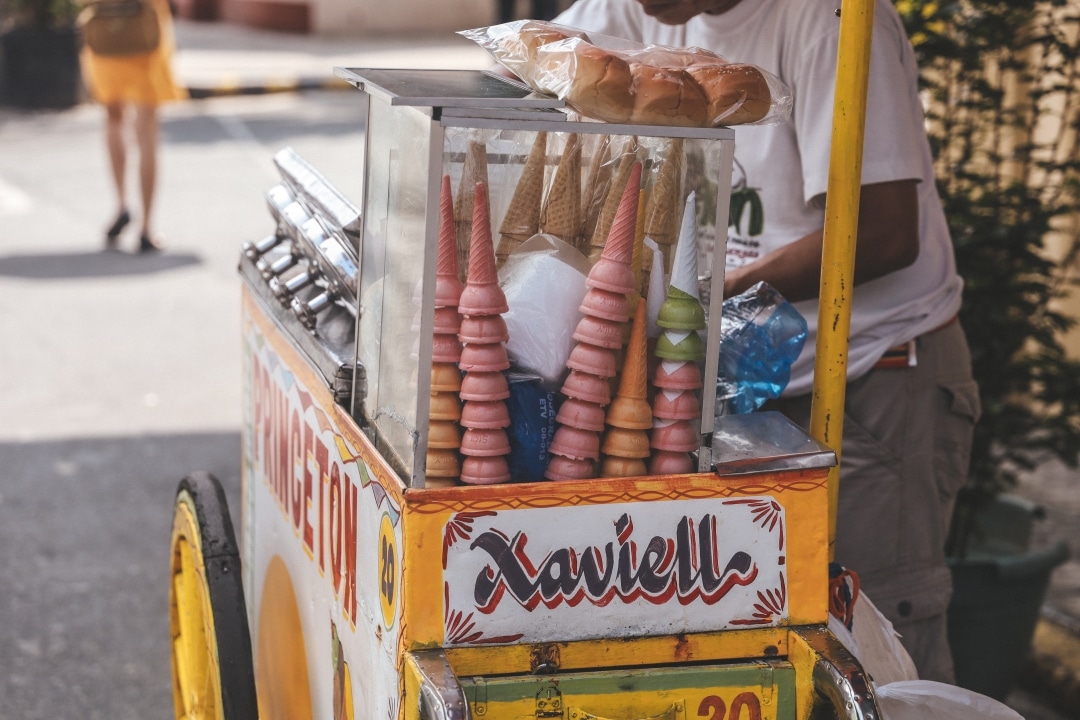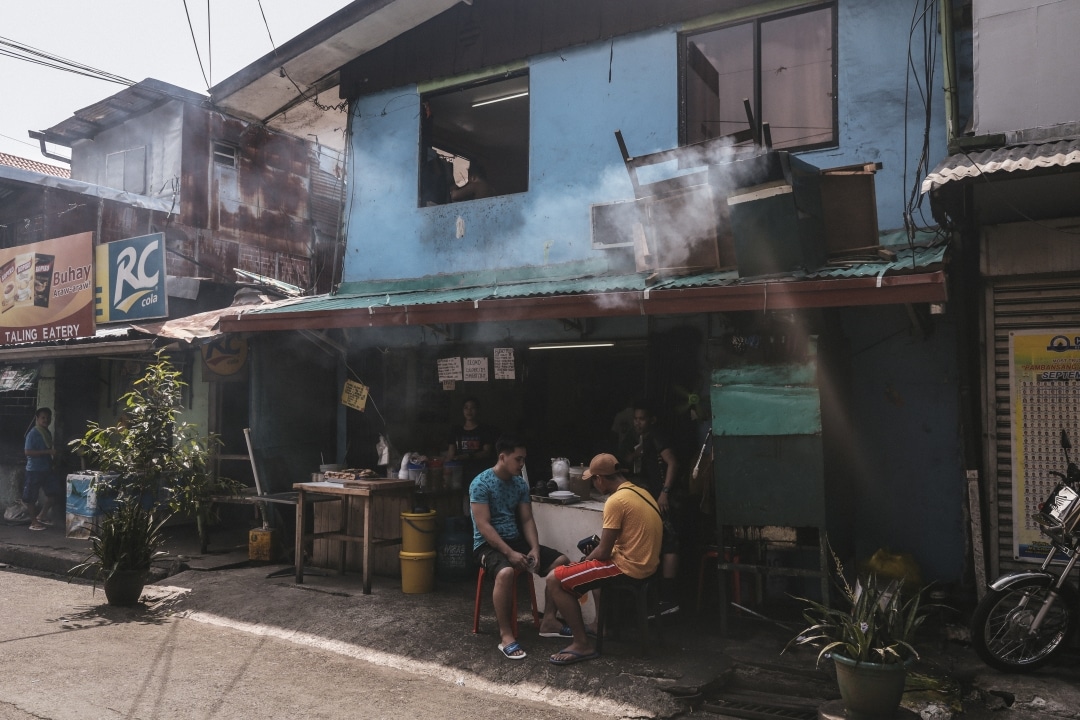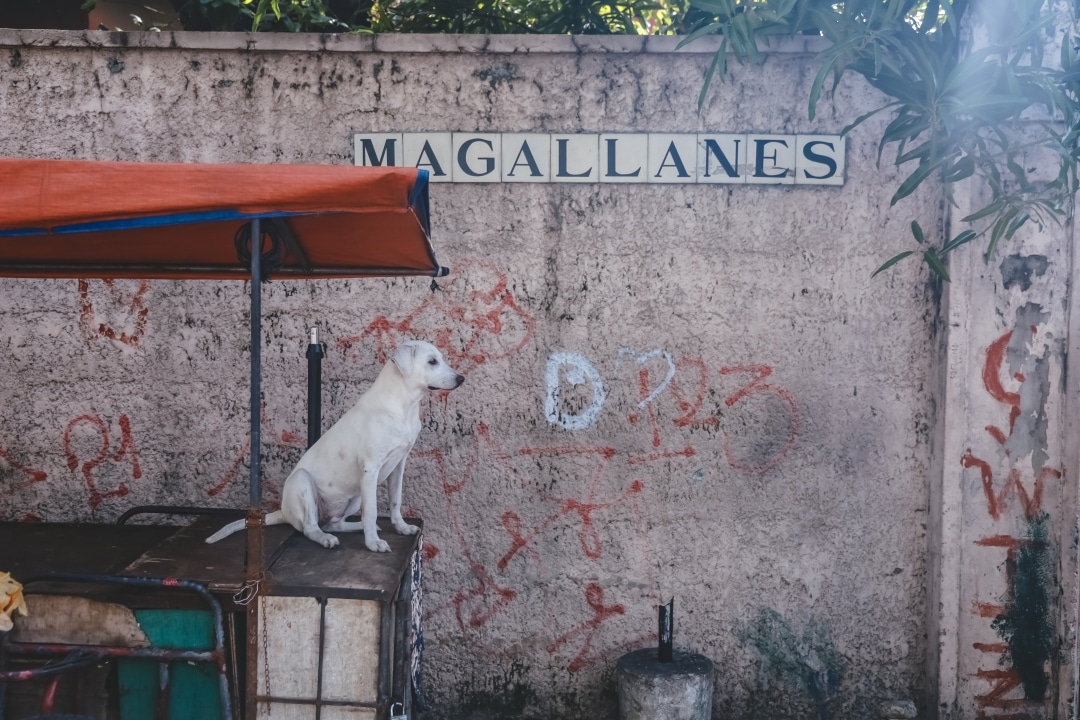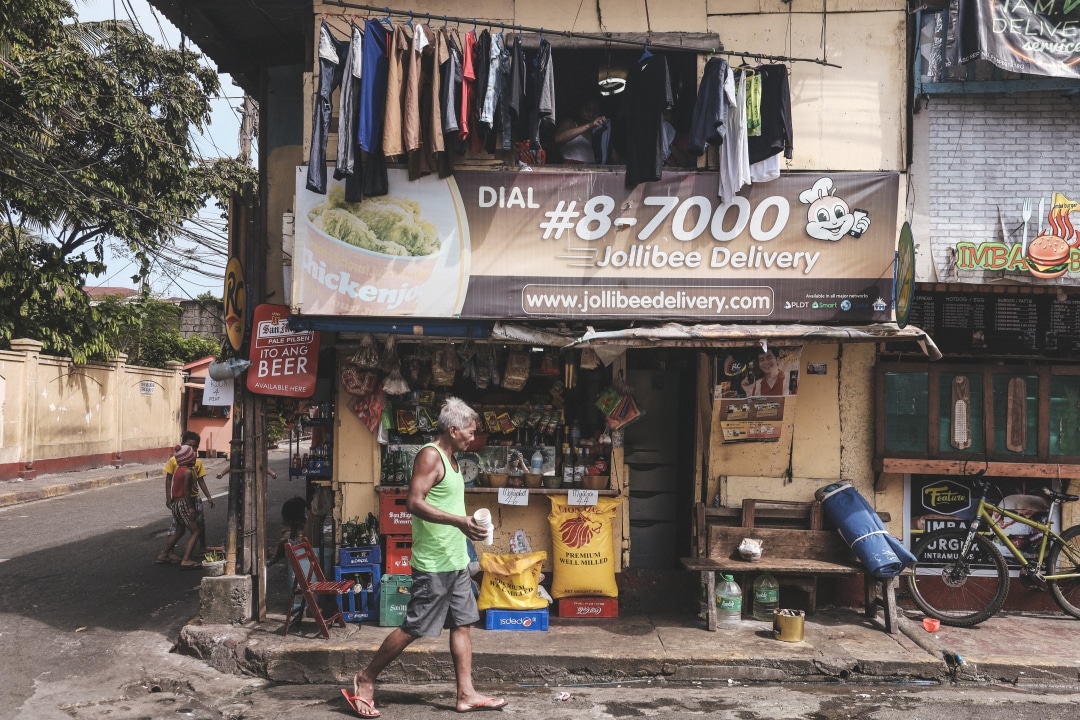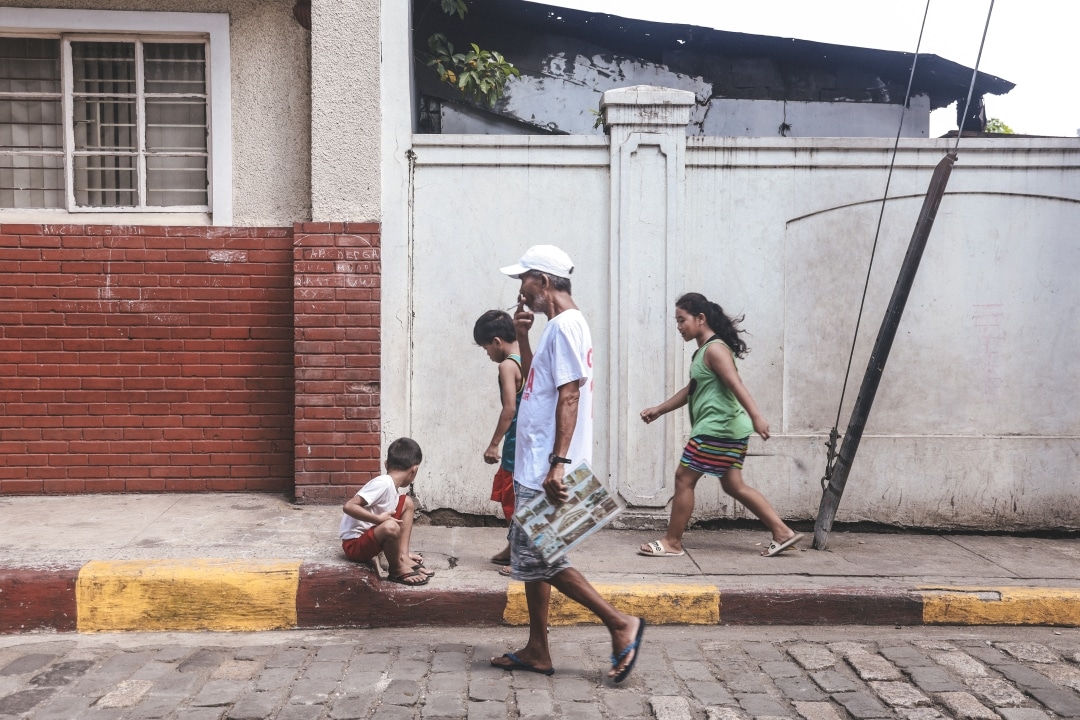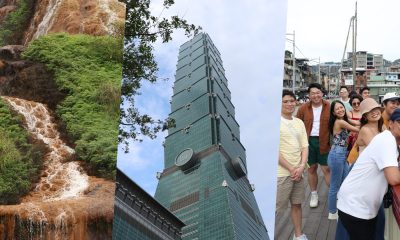
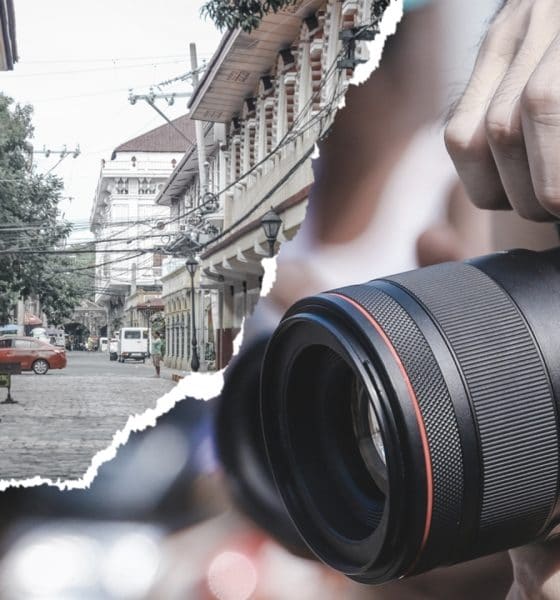
Cameras
Learning street photography with the Canon EOS RP
A picture is indeed worth a thousand words
Street photography has been around for decades — way back in the early years of World War, famine, hunger, and financial crisis. It even sparked several debates whether it’s legal or ethical to do so. Although these questions remain unanswered, a lot of people have been more invested in street photography lately.
It may have started that way but it didn’t stay for long. Today, it’s not just limited to photojournalists, it even hits casual and creative photographers alike. But the real essence of this photography genre is still intact: it is thrilling, challenging, and takes a lot of patience because it should be candid and in perfect timing, not staged.
Canon Philippines gave us an opportunity to learn more about shooting in streets with the guide of popular photojournalist, Jilson Tiu. We roamed around the streets of Intramuros and got a glimpse of life inside the walls.
It hasn’t been long since Canon released the EOS RP in the Philippines. Just a refresher, it is the early successor of the EOS R, which is Canon’s first full-frame mirrorless camera. It is also their second mirrorless camera with a smaller body and introduced other cut-down features to make it (a little bit) cheaper.
Canon has come a long way in making and manufacturing cameras. My first camera is a 60D, which was a prosumer king during its time. My initial hands-on with their newest mirrorless camera felt familiar. They have managed to keep the design language in a smaller form factor.
Enough with the technicals. As someone who has been into photography since high school, I can tell that street photography is specifically not my forte. But this doesn’t mean I won’t challenge myself. I learned so many things during this photo walk — so I’m giving you eight tips when shooting around the streets, together with my EOS RP experience.
1. Learn the basics
They are called “basics” for a reason. You should not go to war without learning how to shoot a gun — the same principle applies in photography. Learning how shutter speed, ISO sensitivity, and aperture work before you shoot is essential because you will not (and should not) rely on Auto Mode, especially that you are going to use DSLR or mirrorless cameras when shooting, which is a lot more versatile than using point-and-shoot cameras.
Other photography jargons such as Depth of Field (DOF), focal length, white balance, exposure bracketing, should follow along the way. Composing shots is also part of the basics, including placing subjects within the frame, exercising Rule of Thirds and/or Golden Ratio, and more. With the existence and vastness of the internet, searching for tutorials shouldn’t be a problem for most.
More over, technicals should come along the way. Even the lens you pick affects the quality of shots you take. Prime, kit, telephoto lenses, you name them. Photography isn’t as easy as it seems, but trust me, knowing the basics will be one of your biggest achievements and advances as an aspiring photographer (or photojournalist).
2. Look for human elements
Imagine walking around the streets without any human element, do you think street photography would still make sense? Human element creates several stories in the shots you capture. Street photography isn’t literally talking about capturing the streets, it’s more about capturing the culture between people and the streets you pass by.
One misconception about street photography is when photographers take their posing models as subjects, and street as a background element — put simply, that’s not street photography.
3. Know one’s story
To whoever is reading this, I would admit that I’m socially awkward. A big chunk of me being an introvert holds me back from talking to people. If you are really focused on doing street photography, this tip is very important in establishing connections and making relationships as you shoot more individuals in the long run.
Once you find at least one (or several) human element/s you want to capture, it shouldn’t stop there. Talk to them. Ask them about life, how is their day going, other questions to follow. These questions may sound simple but it helps in creating a sense of belongingness, even if you are both strangers to each other. It would also feel authentic when you talk to them more, even when you are both focused on the different things you’re doing.
Taking the shot above as an example. Although he is busy with his job as a barber, he still entertained our group because we took the initiative to speak with him. Talking to people contributes to the candidness of the photograph. It did not disrupt the things we all did — he even enjoyed the small talk with our group. Let your single photograph say a thousand words to those who will see it.
4. Respect all things around you
Part of having moral ascendancy is respecting each and everything around you — not limited to life forms such as people, animals, and plants, even non-living things alike.
In this particular shot, an old man got mad at our group for suddenly capturing this dog. After trying to ask for permission, he then decided to let us shoot. There are times when people are not amused seeing cameras pointed at them nor at the things they own. If it happens to you, respect their privacy and decision. You should not argue and you definitely need to walk away before you get yourself in trouble.
5. Stop making poverty an aesthetic
I have seen a lot of street photographers who are making poverty as an aesthetic. In connection to tips two and three, showing one’s respect is not imitating the way they live or how they interact with other people.
Exhibit A: You want to do a staged photoshoot with models pretending they are beggars.
Exhibit B: You were awed when you saw two siblings sleeping along the footbridge. You decided to take photos of them and shared it on Social Media without their consent.
Social Media exposure would raise awareness about their situation, but do you think it would make them happy if they knew they were photographed without consent? If no talk or story-telling happened in between, it is not street photography anymore. The essence of knowing their life nor story never even happened. It is unethical to make one’s living condition a part of your Instagram or Bēhance portfolio — so is exaggerating one’s situation as a staged shoot.
6. Post-processing is normal, #NoFilter shots are not bragging rights
Cameras and lenses are not created equally. Although my experience with the Canon EOS RP is outstanding and its RF 28-70mm f/2L USM lens does the job well, there were times that the shot I took was not aligned to what I wanted the outcome to be.
Post-processing isn’t cheating. There’s nothing wrong with fixing your photography mistake (or worse, a hardware mistake). In fact, it already takes place the moment you press the shutter button on your camera — that is why people should not make #NoFilter shots a big deal. If you are one among the clumsiest users who forgot to set RAW shooting, you have no choice but to stick with your .jpg files.
Let’s say you forgot to adjust the Custom WB (White Balance) while shooting, post-processing apps can help you fix it. You can even do other processing techniques if you want to convey more feelings in your shots. It is a part of experimentation, and the values in each photo you edit are not something that’s always definite.
In this particular photo, I adjusted the curves that helped it achieve a faded look instead of deep shadows, making it feel softer with minimized shadows and contrast. I minimized the highlights because of the harsh sunlight hitting the tile bricks. I also moved the slider to the warmer side for it to look lively. Color science says that photos on the cool side feels melancholic and lifeless.
I suppose not everyone is computer-literate. There are mobile apps you can try when it comes to post-processing your shots — such as VSCO, Snapseed, and Lightroom Mobile, a toned-down version of the PC-based Adobe Lightroom. Take note that mobile apps may have limited functions, especially because they are free.
Reminder: Before all of you use (and abuse) the power of post-processing, you should have already understood the first tip. Not to sound like a broken record but it is about understanding the basics. Nowadays, a lot of people rely on post-processing without knowing the essentials — maybe it’s time to learn them properly.
7. Capture the scenery, too
Imagine you are trying to shoot on top of a building. You peeked at your camera’s viewfinder, adjusted the focal length, and tried fitting human elements within the camera’s frame. Suddenly, you realized that the scenery makes them stand out more — that’s what this tip is for.
Street photography should not be limited to street per se. As long as the background element does not overpower the human element or subject, you are good to go. The lush greenery along this golf course make the golfers stand out more. The differences in their movement make it feel dynamic, candid, and emphasizes their actions of playing golf.
8. Explore unusual elements to shoot
Last but definitely not the least is all about looking for odd elements that will make you and your composition different from others. Staged photographs can be imitated, but not the candid ones. That’s why learning the basics matter, so you can compose shots in a split second — every shot you take makes a lot of difference.
Use juxtaposition when possible in order to convey two contrasting elements in one frame. In the shot above, I was aiming to describe the situation of the Philippines (or other similar nations) today — the biker represents that Filipino citizens are freely moving around, while the window grilles represent that we are restricted to freely express ourselves due to government policies and sanctions (Threat to Press Freedom, anyone?).
I captured more than ten photographs in the same location just to get my desired composition. If you think this goes against the essence of shooting candid photos, it’s not. I do not personally know him nor directed him to pass by. Misconceptions like this can cause trouble among the photography community, and you should avoid that.
Another candid shot I took talks a lot about growing up and getting old. Having the same walking direction between the old man and the children tells us that time is constant. There is nothing that can stop us from accepting more responsibilities and having different kinds of interest as we grow up.
Photography throughout my years
I was born knowing what traditional film cameras look like and how they function. I was even there when VGA, 3-megapixel and 5-megapixel cameras in phones made headlines. Photography has come a long way, and they still keep improving. It’s not even limited to professional cameras anymore that newer smartphones with excellent mobile photography prowess can now be considered as contenders.
As I was saying, street photography is not my forte. But from my experience using the Canon EOS RP coupled with a new RF lens system (vs the old EF lens mount), capturing photos still felt like I was using my old 60D because of the familiar feel and function. After using different cameras throughout my creative journey, Canon still lives up to their name for creating a big name in the camera industry.

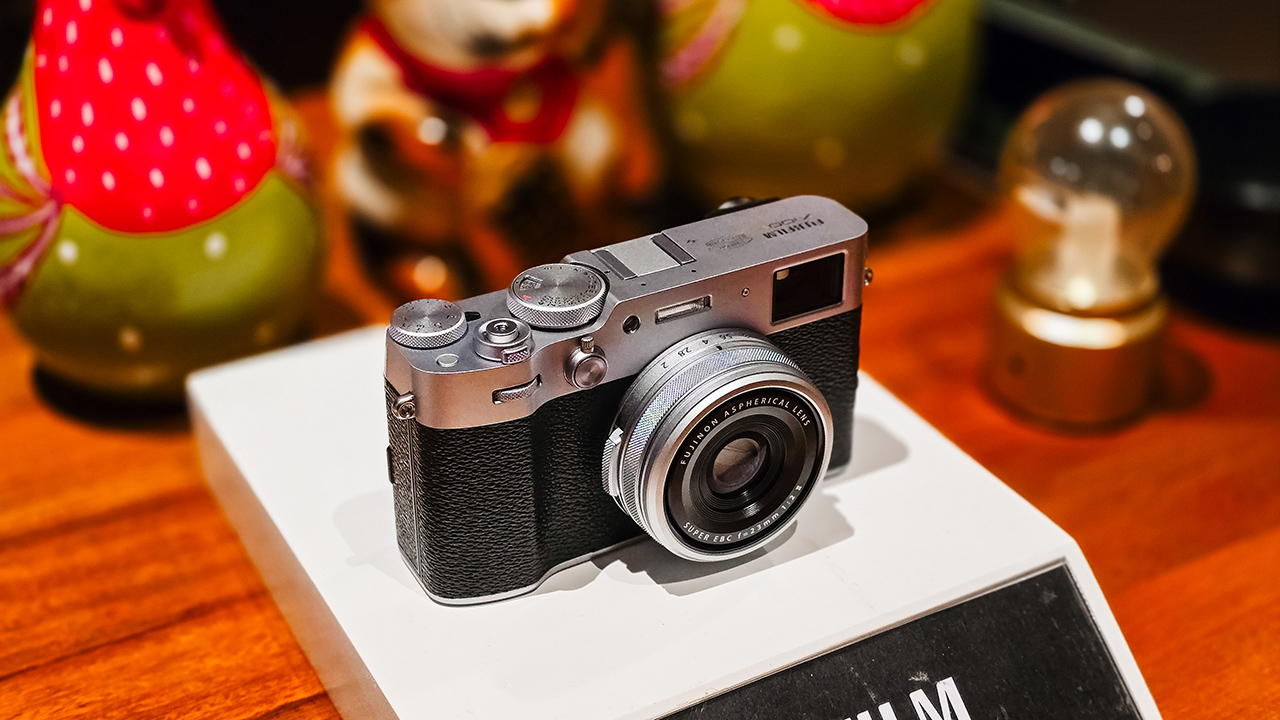
The highly-anticipated Fujifilm X100VI will make its Philippine debut at the FUJIKINA MNL 2024 Camera Fest in Bonifacio High Street, Taguig City. The event is free and open to the public and will be held from April 27 to 28. To register, click this link: FUJIKINA MNL
Celebrity Khalil Ramos will grace the local launch of the Fujifilm X100VI on the second day. Announced a few months ago, the X100VI uses a new 40.2MP X-Trans CMOS 5 HR sensor and is powered by an X-Processor 5 engine. These work together to allow more light absorption. The brand’s latest X100 series offering also features in-body image stabilization for the first time in the series. Moreover, the camera can film up to 6.2K at 30fps.
ALSO READ: Fujifilm announces X100VI, limited-edition model
Aside from the X100VI’s release, FUJIKINA 2024 also allows visitors to engage in various activities. First, there’s the Photo Walk event that lets enthusiasts explore Bonifacio High Street at night and capture its vibrant atmosphere. Participants may event get the chance to win a Fujifilm X-T30 II with their best shots.
Next, Fujifilm’s X-Series and GFX cameras will also be on display, free for passersby to test and feel. There are also three shooting studios for guests to capture memories: the Selfie & Pet, Travel, and Smile studios. And for regular Fujifilm camera users, the event will also offer free servicing.
Furthermore, there are two major photo exhibits throughout High Street, showcasing the best images from the Fujifilm community. Lastly, Fujifilm users may also pre-register for an exclusive XPPH Night here.
You may check the full schedule below.
April 27 – Amphitheater
10:00 a.m. onwards:
- Touch and Try
- Express Service
- XPPH Print Market
4:00 p.m. to 6:00 p.m.:
- Opening program
- Workshops
7:00 p.m. onwards:
- Photo Walk
- Contest
April 28 – Amphitheater
10:00 a.m. onwards:
- Touch and Try
- Express Service
- XPPH Print Market
4:00 p.m. to 6:00 p.m.:
- X100VI launch
7:00 p.m. onwards:
- XPPH Night
April 27 and 28 – C1 Park
10:00 a.m. onwards:
- Fujifilm Interactive Studios (Portrait & Pet, Wanderlust, Project Smile)
- Film Simulation Exhibit
April 27 and 28 – South Street
10:00 a.m. onwards:
- Nationwide Photo and Video Walk 2023 Exhibit
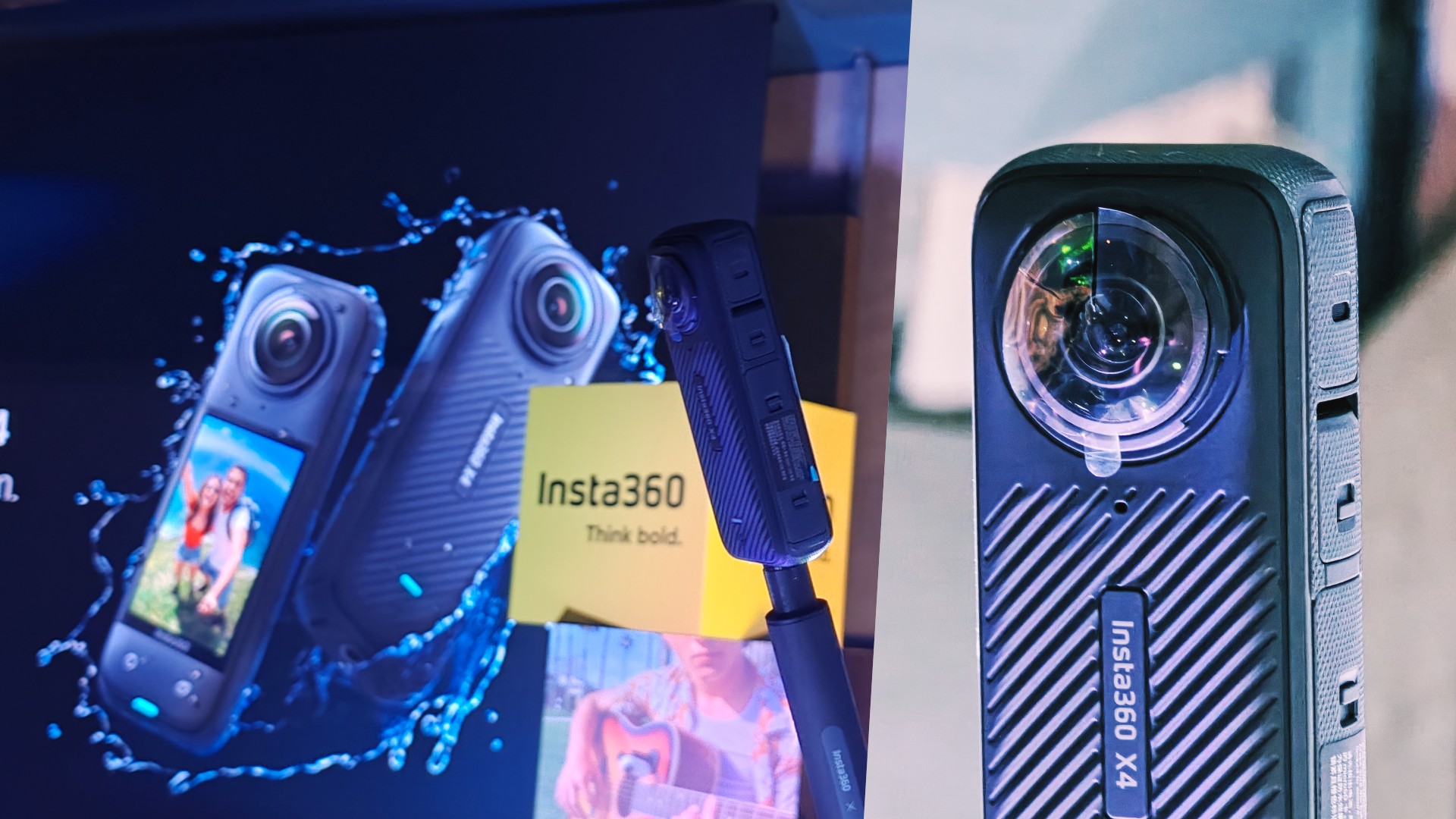
Insta360 is redefining what action cameras are capable of with the introduction of the Insta360 X4. Insta360’s latest offering allows users to film 8K resolution 360-degree videos. In addition, it can record slow-motion 4K videos at up to 120fps.
As expected, the X4 retains Insta360’s “shoot first, point later” ability and invisible selfie stick effect. Moreover, it doubles as a traditional action camera with “flat” captures in Single-Lens mode at up to 4K at 60fps.
The Insta360 X4 is available for US$ 499.99/ PhP 30,990 on the official Insta360 store, Amazon, and other retailers.
Incredible third-person views at 8K
The 8K at 30fps resolution is the highest setting for a 360-degree action camera yet. With such high resolution, users can expect detailed and sharp videos even after reframing, or choosing which specific angle to include in the capture.
For slow-motion, users can now film 4K videos at 100fps for cinematic shots slowed down four times. Furthermore, the highest resolution for a 60fps 360-degree video is upgraded to 5.7K. You may also use the X4 to take stills, as it is capable of 72MP 360-degree photos.
Two cameras in one
Aside from its default 360-degree capturing mode, users may utilize the Insta360 X4 as a regular wide-angle camera. They may shoot a first-person POV video with Single-Lens mode from a chest-mounted position. “Regular” means not having the fish eye-looking effect from the 360-degree mode and having ordinary, flat-looking images instead.
Under the Single-Lens mode, users will be able to record 4K videos at 60fps with an ultra-wide 170-degree field of view. This can be upgraded even more with MaxView while retaining 4K resolution at 30fps. Meanwhile, Me Mode, which erases the selfie stick, can film 4K at up to 120fps.
There are also upgrades on the X4’s creative shooting modes. Bullet Time can now shoot slow-mos at 5.7K at 120fps, or even 3K at an astounding 240fps. Hyperlapse videos, meanwhile, can be recorded in 8K quality.
Action specialist
A 5nm AI chip powers the Insta360 X4, along with a smart control system with Voice and Gesture Control features, and a host of AI-powered shooting and editing features.
The action camera comes with a 2.5-inch Corning Gorila Glass touchscreen for on-the-go use. Users may adjust the settings or choose the desired mode more easily.
The X4’s 2,290mAh battery allows for up to a 135-minute run time (at 5.7K@30fps). This is an impressive 67% longer battery life than its predecessor, the X3.
Moreover, the device is waterproof at up to 164 feet for diving, and cold-weather resistant at up to -20 degrees Celsius.
AI-powered editing
The X4 also harnesses the power of AI. Using the Insta360 app, users may simply move their phone or use the virtual joystick to point the camera. AI Edit, on the other hand, lets Insta360’s entire algorithm do the work for the reframing process. This improved algorithm has better subject detection, helping users save time. Users may also get creative with Shot Lab and Motion ND filters.
Cameras
Fujifilm announces X100VI, limited-edition model
The first X100 camera with in-body image stabilization
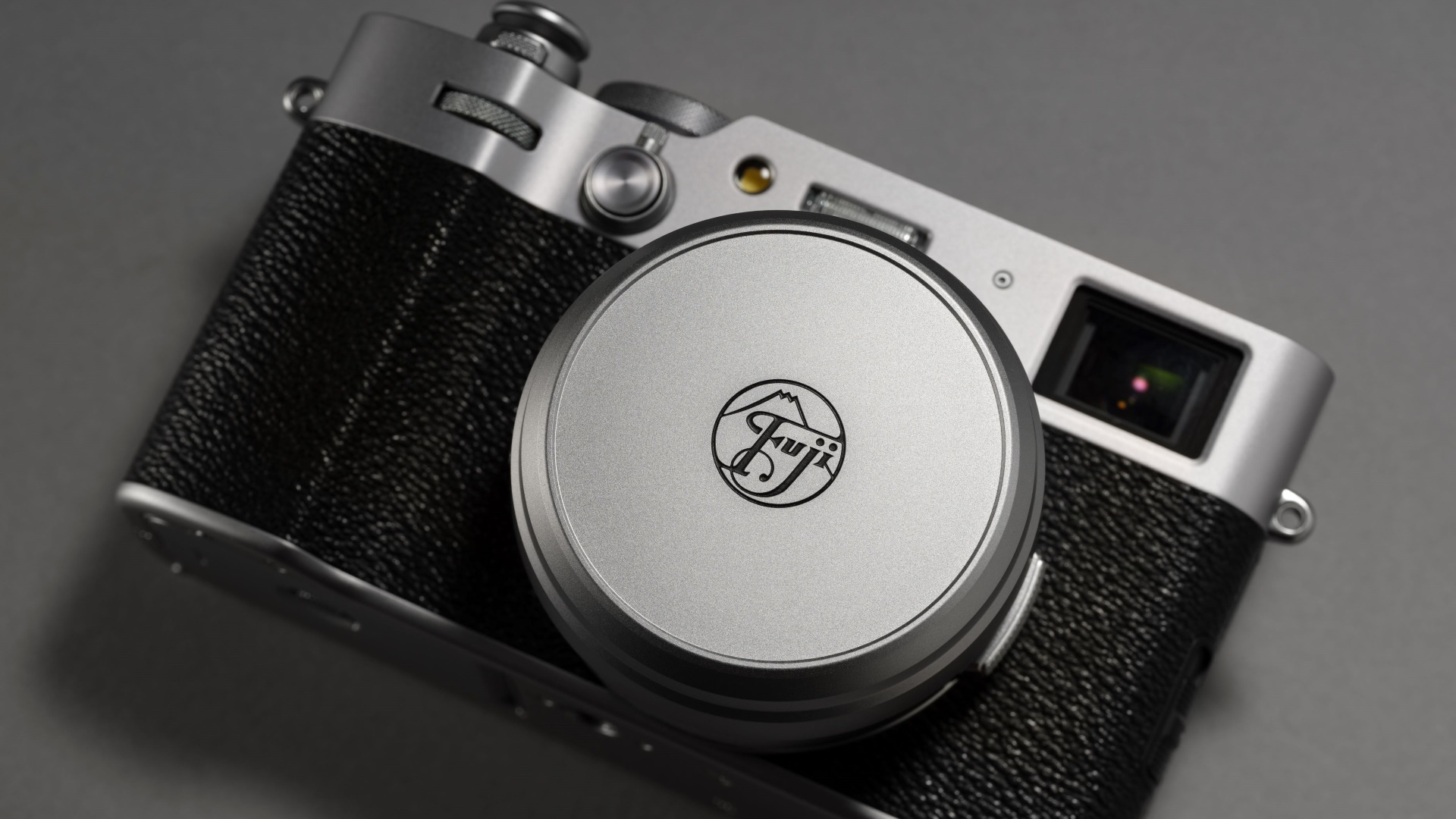
Fujifilm has launched its latest compact digital camera: The Fujifilm X100VI. The sixth generation model introduces a handful of firsts for an X100 series camera.
The X100VI boasts of a new 40.2MP X-Trans CMOS 5 HR sensor and is powered by an X-Processor 5 engine. These work together to allow more light than any prior X100 camera.
For the first time, the camera offers in-body image stabilization with up to 6.0 stops. Filming at up to 6.2K 30p has also been made possible.
High performance
In addition to more light absorption, the X100VI features ISO 125, which was only available as an extension in previous models. Its tracking AF function also ensures high-quality content especially for filming.
The camera comes with 20 film simulation modes, including the new “REALA ACE” mode for a diverse range of distinctive tones. This particular mode offers faithful color reproduction and high-contrast tonality which is suitable for various subjects and situations.
Moreover, the X100VI supports Frame.io Camera to Cloud without the need for additional accessories. Users will only need to wirelessly connect to the internet to automatically upload photos and videos. This speeds up the process from shooting to final editing.
Better operability
The X100VI also has an “Advanced Hybrid Viewfinder” function. With this, users will be able to switch between the optical (OVF) and electronic (EVF) viewfinders. The EVF itself is equipped with a high-resolution OLED panel with about 3.69 million dots.
Meanwhile, the “Electronic Range Finder” (ERF) allows a small EVF to be simultaneously displayed on the OVF. This permits the photographer to capture the subject in the OVF while magnifying the in-focus area in the small EVF.
Functional design
The Fujifilm X100VI retains the compact and lightweight look of its previous iterations. As with its predecessors, the latest model’s body uses aluminum for the top and bottom surfaces.
It has also adopted the X100V’s ultra-thin tilt LCD monitor design. The shape of the grip, on the other hand, has been fine-tuned to ensure a better feel. The positions of the buttons on the back have also been moved.
Limited edition X100VI
In addition to its release, a limited edition X100VI model will be made available to celebrate Fujifilm’s 90th anniversary. Only 1,934 units of the limited edition model will be available worldwide.
These numbered X100VI units are packaged in a special box that includes a special strap, soft release button, and history cards.
The camera body is engraved with the founding logo in 1934, along with a unique serial number.
In the Philippines, The Limited edition X100VI will retail for PhP 130,990. Meanwhile, the standard edition is priced at PhP 103,990.
-

 Events2 weeks ago
Events2 weeks agoStellar Blade: PlayStation taps cosplayers to play Eve for game’s launch
-

 Features1 week ago
Features1 week agoFortify your home office or business setup with these devices
-

 Gaming2 weeks ago
Gaming2 weeks agoThe Rogue Prince of Persia looks like an ultra-colorful roguelite
-

 Accessories2 weeks ago
Accessories2 weeks agoLogitech unveils G Pro X 60 gaming keyboard: Price, details
-

 Reviews1 week ago
Reviews1 week agorealme 12+ 5G review: One month later
-

 Gaming2 weeks ago
Gaming2 weeks agoLenovo confirms development of a Legion Go 2
-

 Deals2 weeks ago
Deals2 weeks agoTCL P635 TV: Big savings for TCL’s anniversary
-

 Gaming1 week ago
Gaming1 week agoNew PUMA collection lets you wear PlayStation’s iconic symbols


